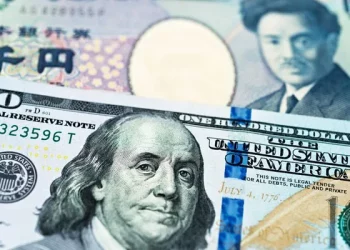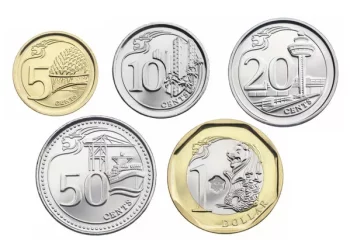The world of foreign exchange (Forex) trading can be complex and dynamic, but it provides significant opportunities for those who understand the intricacies of currency exchange rates. A frequently asked question among traders and investors, particularly those from India, is about the conversion of Indian Rupees (INR) to US Dollars (USD). In this article, we will delve into the factors affecting the INR to USD exchange rate, how traders can profit from currency fluctuations, and what this conversion means for the broader Forex market.
Understanding the INR to USD Conversion
The Indian Rupee (INR) is the official currency of India, and it is one of the most widely traded currencies in the world. The United States Dollar (USD), on the other hand, is considered the global reserve currency and is extensively used in international trade and finance. The exchange rate between INR and USD is influenced by a variety of economic, political, and market-driven factors.
When we talk about converting 5000 INR to USD, we are referring to the value of the Indian Rupee in terms of the US Dollar. The exchange rate tells us how much one currency is worth in terms of another. For example, if the exchange rate is 1 USD = 75 INR, then 5000 INR would be equivalent to 66.67 USD.
Key Factors That Affect the INR to USD Exchange Rate
The INR to USD exchange rate does not remain fixed; it fluctuates constantly based on a number of key factors. These factors are crucial for traders who seek to profit from currency movements. Understanding these variables is essential for any Forex trader. Here are some of the main factors that influence the INR to USD exchange rate:
1. Economic Indicators
Economic indicators are one of the most important drivers of currency values. Key metrics such as GDP growth, inflation rates, employment data, and interest rates play a significant role in determining the strength or weakness of a currency. For instance, if India reports higher economic growth, it could lead to an appreciation of the Indian Rupee against the US Dollar. On the other hand, if the US economy experiences a strong period of growth or higher interest rates, it could lead to the appreciation of the US Dollar.
2. Interest Rates and Monetary Policy
Interest rates are another critical factor in Forex trading. Central banks, such as the Reserve Bank of India (RBI) and the US Federal Reserve, influence currency values through their interest rate policies. When a central bank raises interest rates, it typically strengthens the currency because higher interest rates attract foreign capital seeking better returns. Conversely, a decrease in interest rates can weaken a currency.
In India, the RBI’s decisions on interest rates can directly affect the INR to USD conversion. Similarly, the actions of the Federal Reserve can have a profound impact on the USD’s value. If the Federal Reserve raises interest rates, the USD tends to appreciate, making the INR less valuable in comparison.
3. Inflation Rates
Inflation is another key factor that can influence currency exchange rates. A country with low inflation typically sees its currency appreciate over time. This is because low inflation indicates stable prices and a healthy economy. On the other hand, countries with high inflation rates often experience a depreciation in their currency, as the value of money erodes.
India has experienced varying inflation levels over the years, which has directly impacted the value of the Indian Rupee against the US Dollar. When India faces higher inflation than the US, the INR generally weakens, making 5000 INR worth fewer US Dollars.
4. Balance of Trade and Current Account Deficit
A country’s balance of trade (exports minus imports) has a significant impact on its currency. If a country exports more than it imports, there is a higher demand for its currency, which leads to an appreciation. In India’s case, the trade deficit has often played a role in weakening the INR. India imports a large number of goods, especially oil, which increases the demand for foreign currencies like the USD, putting pressure on the Rupee.
5. Political Stability and Global Events
Political stability is a key determinant of a country’s economic health and can significantly influence currency values. Political uncertainty, such as elections, changes in government policies, or geopolitical tensions, can lead to fluctuations in the INR to USD exchange rate. For example, global events like the COVID-19 pandemic or the US-China trade war can have ripple effects on exchange rates across the world.
6. Foreign Investment and Foreign Exchange Reserves
Foreign direct investment (FDI) and foreign institutional investment (FII) are important factors that can strengthen or weaken the INR. When foreign investors are confident about India’s economic prospects, they invest more in Indian assets, leading to an appreciation of the Rupee. Conversely, if foreign investors pull out their investments, the INR may depreciate.
Similarly, the foreign exchange reserves held by a country can impact the exchange rate. A country with higher reserves is better positioned to manage its currency’s value. The RBI’s foreign exchange reserves, for example, can help stabilize the INR in times of crisis or economic downturn.
How Forex Traders Can Profit from INR to USD Movements
Forex traders look to profit from fluctuations in currency values by buying and selling currencies. The goal is to buy a currency at a low price and sell it at a higher price or sell a currency at a higher price and buy it back at a lower price. A trader who predicts the movement of the INR to USD exchange rate correctly can make a profit. Here’s how:
1. Long and Short Positions
In Forex trading, traders can take both long and short positions. A long position involves buying a currency in anticipation that it will appreciate. For example, if a trader believes that the INR will strengthen against the USD, they would buy INR in exchange for USD. If the INR appreciates, the trader can then sell the INR back for a profit.
Conversely, a short position involves selling a currency in anticipation that it will depreciate. If a trader believes that the INR will weaken against the USD, they would sell INR and buy USD. If the INR does indeed weaken, the trader can buy it back at a lower price, pocketing the difference.
2. Leveraged Trading
Forex markets are known for their high leverage, meaning traders can control larger positions with a smaller amount of capital. Leverage allows traders to amplify their profits, but it also increases risk. For example, if a trader has a 100:1 leverage, they can control a position of $100,000 with just $1,000.
However, leveraged trading can also lead to significant losses if the market moves in the opposite direction. It is essential for traders to use stop-loss orders and risk management techniques when trading on leverage.
3. Technical and Fundamental Analysis
Forex traders use two primary methods of analysis to make informed trading decisions: technical analysis and fundamental analysis.
Technical Analysis involves studying historical price movements and chart patterns to predict future price action. Traders look at indicators like moving averages, Relative Strength Index (RSI), and Bollinger Bands to identify potential entry and exit points.
Fundamental Analysis involves evaluating economic data, news events, and market sentiment to forecast currency movements. For example, a trader might monitor the release of key economic reports such as the US Non-Farm Payrolls or India’s GDP growth rate to predict how these will affect the INR to USD exchange rate.
Both forms of analysis are important in Forex trading, and traders often use a combination of the two to refine their strategies.
The Impact of 5000 INR to USD Conversion on Individuals and Businesses
For individuals and businesses, the conversion of 5000 INR to USD can have practical implications, particularly for those who travel, shop online, or engage in international business. A weaker INR means that individuals and businesses will need to spend more INR to obtain the same amount of USD, which can increase the cost of imports and foreign travel.
1. Tourism and Travel
For Indian travelers heading to the United States or other countries that use the US Dollar, a weaker INR means that they will get fewer US Dollars for their 5000 INR. This could make international travel more expensive, particularly when it comes to accommodation, dining, and activities. Conversely, a stronger INR would make travel abroad more affordable.
2. Online Shopping
Many Indian consumers shop online from US-based retailers, and transactions are often conducted in USD. A favorable INR to USD exchange rate can make products from the US more affordable, whereas a weaker INR can increase the cost of imported goods.
3. Business and Importing Goods
For businesses in India that import goods from the US or pay for services in USD, the exchange rate plays a crucial role. A weaker INR means higher costs for imported products, which can affect profit margins. Many companies hedge against currency fluctuations to manage this risk, using instruments like forward contracts or options to lock in exchange rates.
Conclusion
The exchange rate between Indian Rupees (INR) and US Dollars (USD) is influenced by a multitude of factors ranging from economic data and interest rates to political stability and global events. As Forex traders know, predicting currency movements is not always straightforward. However, by understanding the key drivers of the INR to USD conversion, traders can identify opportunities to profit from these fluctuations.
For individuals and businesses, the conversion of 5000 INR to USD has significant practical implications, particularly when it comes to travel, online shopping, and international trade. Keeping an eye on the INR to USD exchange rate can help businesses make informed decisions and plan for future costs.
In conclusion, the Forex market is a complex but exciting arena, and those who take the time to learn about the factors influencing currency values can navigate it successfully. Whether you are a seasoned trader or a newcomer to Forex, understanding the exchange rate dynamics between INR and USD is an important aspect of global finance.
Related Topics:



























